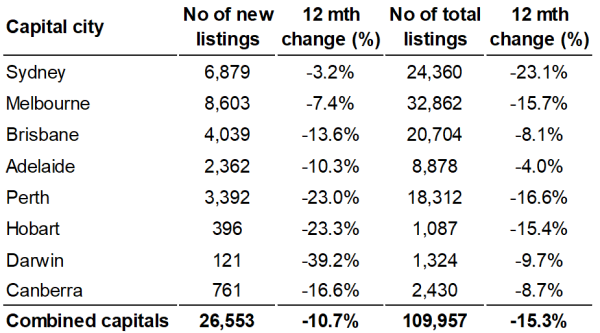While home listings managed to bounce back from the slump during the winter, the housing supply this spring selling season paled in comparison to the previous spring periods, according to CoreLogic.
The number of new listings went up by 56% in November. Despite this substantial growth, new listings in November were actually down 12.4% from last year, clocking the lowest reading for spring since 2009.
"With fresh listings at a lower than normal level and buyer demand rising, the total number of advertised properties available for sale is also tracking at historic lows," CoreLogic head of research Tim Lawless said.
According to CoreLogic, both new listings and total listings were down across all capital cities over November compared with the same period a year ago.

Darwin reported the most significant drop in new listings, down by almost 40% from last year. Sydney, Perth, Melbourne, and Hobart reported the largest decline in total listings.
CoreLogic's data coincide with the figures from SQM Research. Based on SQM Research's listings data, Sydney witnessed the most significant decline in listings, followed by Perth and Melbourne.
On a monthly basis, SQM Research's data showed gains across the board save for Darwin, where listings went down by 1.9%. The table below shows SQM Research’s listings results for November:

Weak housing conditions?
Lawless said the lower-than-usual spring listings reflect a combination of factors. For instance, homeowners in Darwin and Perth might have felt less confident about selling their homes.
"Selling conditions have been tough in these markets since 2014 and prospective home sellers are likely wary of the challenging selling conditions, where homes are taking a long time to sell, discounting rates are high, and properties are often selling for a lower amount than what they were purchased for," he said.
In stronger markets like Sydney and Melbourne, the low number of listings was more surprising. Lawless said low consumer confidence could be one of the reasons why sellers decided to remain hesitant to sell.
"Selling a home, as well as buying a home, is a high-commitment decision that is harder to make when confidence in the overall economy and future household finances is low," he said.
The speed of the market recovery could also be another reason. House prices have started to grow five months ago, and sellers appear to still be in a wait-and-see approach.
"Preparing a property for sale involves a number of processes that take some time, including making the decision to sell, finding an agent, preparing the home for sale and commencing a marketing campaign," Lawless said.
This could mean that a larger number of listings could enter the market this month until the first quarter of 2020.